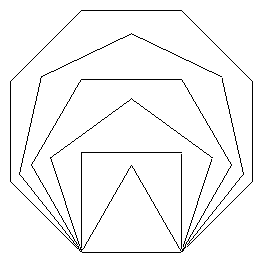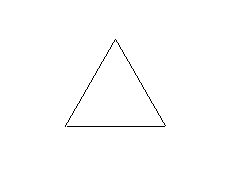
polly.nestEquiPolygons(100, 1);
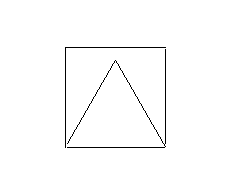
polly.nestEquiPolygons(100, 2);
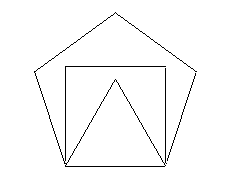
polly.nestEquiPolygons(100, 3);
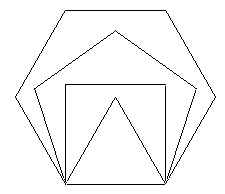
polly.nestEquiPolygons(100, 4);
NestedPolygonWorld, PolygonBuilders
build nested polygon patterns. We can specify the size
of the polygon (ie the length of one side -- all sides are the same
length) and the number of polygons to nest.
When we create a PolygonBuilder polly,
she starts at a specific place with her pen down and facing the right.
If we ask her to build fewer than one polygon, she does nothing.
She builds her first polygon (an equilateral triangle) with the bottom left
corner of the polygon at her starting position.
Regardless of the number of polygons she builds,
polly stands in her initial position facing
her initial direction when she is finished.
The following pictures illustrate the result from asking
polly to build different numbers of polygons.
 polly.nestEquiPolygons(100, 1);
|
 polly.nestEquiPolygons(100, 2);
|
 polly.nestEquiPolygons(100, 3);
|
 polly.nestEquiPolygons(100, 4);
|
Our task is to fill in the code for the nestEquiPolygons
method in the PolygonBuilder class. The following
skeleton is provided for us.
public void nestEquiPolygons (double size, int number) {
System.out.println("nestEquiPolygons("+size+", "+number+");");
// add your code here
}
PolygonBuilder class. We should not need to modify
the NestedPolygonWorld class in order for our code to work.
However, we may modify it during testing.
Note: Be sure your code works with numbers higher than 4!
For example, polly.nestEquiPolygons(100, 6);
should give you the picture below:
